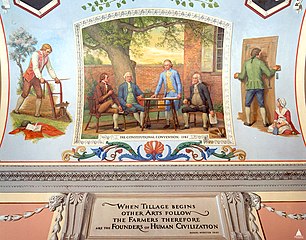Mission Critical, Method Madness
Originators of great ideas, inventors, and founders have a long history of frustration with the implementations of their discoveries. Those who create a product or service may not be the ones who successfully organize the production and delivery; it’s one thing to invent and create and quite another to organize, manage, and lead. And once the founder or creator involves others in the project, control can quickly be lost to the group that is now charged with implementation. I wonder how many founders are saddened by what becomes of their creations as others take things in different directions?
The source of frustration and disappointment is the confusion between mission and method that can arise in the lifetime of any organized effort; from nations to small businesses to community-based not-for-profits. The founders and creators, the originators, are mission-focused and mission-driven: the initial idea or invention came about as a response to or a solution for some challenge or discovery. The founders’ greatest desire is to present their idea or invention in a way that does what it was invented and designed to do successfully. To fulfill this promise, resources and efforts are organized: a business or organization is created, a nation is founded, a religion begins. These organized efforts involve other people, and other people bring their own ideas and interpretations. Methods to implement actions that will fulfill the mission are employed, and within some period of time these methods become the drivers for continuation. Countless Board of Directors meetings at countless organizations are spent in debate over methods, with almost no regard for mission.
Methods replace the mission, just as the means replace the ends. Public policy is full of examples. Consider gun control and the debate over the Second Amendment (the Right to Bear Arms). Consider for a moment that the Declaration of Independence and the Preamble to the Constitution are mission statements, and the articles and amendments of the constitution are methods. Methods adapt to demands and circumstances, and if the formal process contains procedures for amendments, the originating documents can evolve to address those changes. One interpretation is that the Second Amendment was added to protect citizens from over-reaching centralized anti-democracy government. Yet Aaron Swartz, a 26 year old computer whiz who recently committed suicide while being hounded by the government and facing a 30-year prison sentence for a minor computer hacking event (he downloaded academic journal articles), would not have been saved by keeping a gun under his pillow. Today, individual citizens need the right to freely access information, as well as to be free from governments’ computer-based policing; the modern state can be far more dangerous through information control than through gun control.
The mission of the United States was to ensure justice under law, democracy, equality, individual freedoms and rights, and organized capacity to address the common good as a number one priority. The means to accomplish all this is found in the Constitution and subsequent legislation and laws. The measure of a given method is supposed to be the mission statements: if a piece of legislation or law undermines the stated purposes and missions, then the law needs to be changed, amended, or discarded. But over time we’ve come to have a higher regard for the methods, and we measure new decisions and actions against the older methods. If something new threatens to change, amend or end one of the methods, courts, and particularly the Supreme Court, squashes the new legislation — even if it does a better job of protecting and fulfilling the mission. Protecting the rights of corporations as if they were individual citizens is a case in point; so is the undermining of election laws and election finance limits.
What Can a Mindful Founder Do?
The same conflict — the confusion of mission and method — emerges in all organizations regardless of size and intention. As the organized effort moves away from and past the founder, the focus turns from mission control to method control. One approach is for the founder to invite others to participate and get involved, but exert complete executive control. The Dictator-Founder seeks to ensure commitment to mission by directing every decision and action. The wiser approach is the Founder-Leader: he or she recognizes the need to involve and engage others, and knows full well that those others may alter the initial idea or invention. But rather than attempting absolute control, the Founder-Leader provides inspiration, encouragement, and organizes environments that allow the optimal expression of his or her ideas and programs. And the mission statement is at the core of this type of organization. Having a clear mission statement from the beginning is essential. A very broad and vague mission statement can allow almost any method; an overly detailed and strict mission statement can stifle innovation and critical response to change. The mission statement is the critical foundation block and on-going tool for implementation, and for organizational viability. Founders may find greater comfort in sharing their visions and ideas through Board participation rather than through executive control. If the method requires smart, competent leadership and management, and these are not the strengths of the founder or inventor, then recruiting the right talent and stepping aside will be in the best interests of the founder, the organization, and the initial idea.


